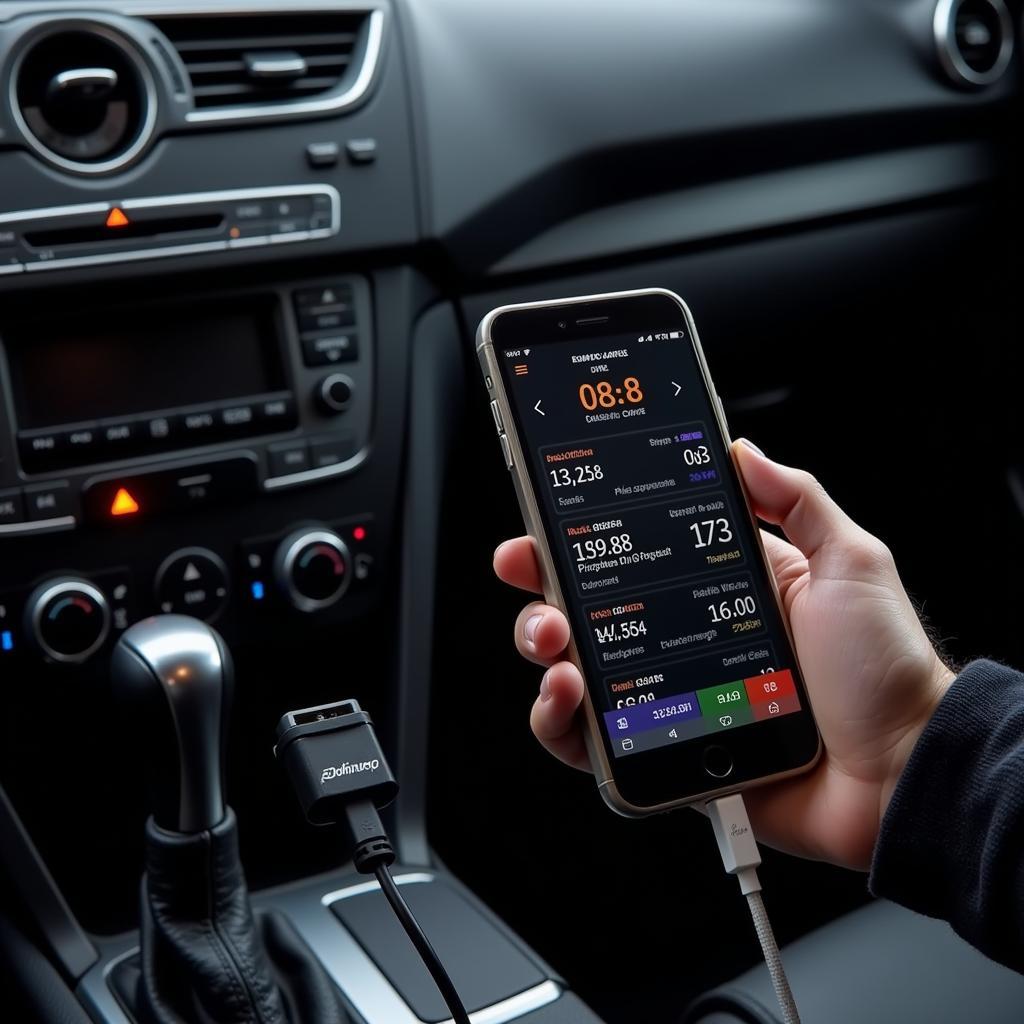The world of automotive repair has become increasingly complex, with vehicles relying heavily on intricate electronic systems. Gone are the days of simple mechanical fixes; today’s cars require a deeper understanding of software and electronics to diagnose and repair. This is where automotive diagnostic scan tools come into play. These indispensable tools provide a window into a vehicle’s computer system, allowing you to read and interpret error codes, monitor live data streams, and even perform advanced functions like module programming.
But with a market flooded with various scan tools, each boasting different features and price points, choosing the right one can be overwhelming. This comprehensive guide will navigate you through the intricacies of automotive diagnostic scan tools, equipping you with the knowledge to make an informed decision.
Understanding Automotive Diagnostic Scan Tools
Before diving into the reviews, it’s crucial to understand what automotive diagnostic scan tools are and how they work. These tools, often referred to as OBD-II scanners, connect to your vehicle’s onboard diagnostic system (OBD-II port) to retrieve information.
This information, presented as Diagnostic Trouble Codes (DTCs), reveals potential issues with your engine, transmission, emissions system, and more. While basic code readers only display these codes, advanced scan tools offer a plethora of features, including:
- Live data streaming: Monitoring various engine parameters in real-time, such as RPM, temperature, and oxygen sensor readings.
- Bi-directional control: Allows you to command specific vehicle components, like turning on fuel pumps or cycling ABS solenoids, for testing purposes.
- ECU programming: Updating or reprogramming a vehicle’s Electronic Control Unit (ECU) with new software.
- Special functions: Some tools offer specialized functions like key programming, ABS bleeding, and TPMS reset.
Types of Automotive Diagnostic Scan Tools
Navigating the diverse world of scan tools requires understanding the different types available:
1. Code Readers
As the name suggests, code readers primarily read and display DTCs. These are budget-friendly options suitable for DIYers who want to understand basic engine problems.
2. OBD-II Scanners
A step up from basic code readers, OBD-II scanners offer more features like live data streaming and freeze frame data, providing a clearer picture of the vehicle’s condition.
3. Professional-Grade Scan Tools
These high-end tools, used by professional mechanics, offer a comprehensive suite of features, including advanced diagnostics, bi-directional control, and ECU programming capabilities.
Choosing the Right Scan Tool: Factors to Consider
Selecting the right scan tool depends on your needs and expertise:
- Budget: Prices vary significantly, so define your budget before exploring options.
- Skill level: Consider your comfort level with automotive technology.
- Vehicle compatibility: Ensure the tool supports your vehicle’s make and model.
- Features: Determine which features are essential for your needs.
- Software updates: Regular updates are crucial for staying compatible with newer vehicle models.
Top Automotive Diagnostic Scan Tools: A Comparative Overview
Here’s a look at some of the top-rated scan tools in the market:
| Scan Tool | Type | Price Range | Key Features |
|---|---|---|---|
| Autel MaxiCOM MK908P | Professional-Grade | $$$$$ | Comprehensive diagnostics, ECU programming, 31+ service functions |
| Launch X-431 V+ | Professional-Grade | $$$$ | Extensive vehicle coverage, bi-directional control, 20+ special functions |
| BlueDriver Pro Scan Tool | OBD-II Scanner | $$ | Enhanced diagnostics, live data, repair reports |
| FIXD OBD2 Professional | Code Reader | $ | Reads and clears codes, provides code definitions |
Canon 1435IF Scan Tool
While this article focuses on automotive diagnostic tools, it’s worth noting that other types of scan tools exist for different purposes.
The Future of Automotive Diagnostics
As vehicles become increasingly sophisticated, so will the tools used to diagnose and repair them. Expect to see more advanced features like:
- Cloud-based diagnostics: Accessing vehicle data and performing diagnostics remotely.
- Predictive maintenance: Using AI and machine learning to predict potential issues before they arise.
- Augmented reality: Overlaying diagnostic information onto a real-world view of the vehicle.
Conclusion
Investing in the right automotive diagnostic scan tool can save you time, money, and frustration in the long run. By understanding the different types of tools, their features, and your specific needs, you can make an informed decision that empowers you to tackle automotive repairs with confidence.
Need help choosing the perfect automotive diagnostic scan tool? Contact ScanToolUS today at +1 (641) 206-8880 or visit our office at 1615 S Laramie Ave, Cicero, IL 60804, USA. Our team of experts can guide you through the selection process and answer any questions you may have.
FAQs
1. Are professional-grade scan tools worth it for DIYers?
While professional-grade tools offer advanced features, they can be expensive and complex for casual users. Consider your skill level and budget before investing in a high-end tool.
2. Can I update my scan tool’s software?
Most reputable manufacturers offer software updates to ensure compatibility with newer vehicle models. Check the manufacturer’s website for update procedures.
3. Can I use a scan tool on any car?
Not all scan tools are universally compatible. Ensure the tool you choose supports your vehicle’s make and model.
4. What are network scan tools freeware?
Network scan tools are used to identify devices connected to a network. These are different from automotive diagnostic scan tools.
5. Is a scan tool the same as a code reader?
While both tools can read DTCs, scan tools offer additional features like live data streaming and bi-directional control.


